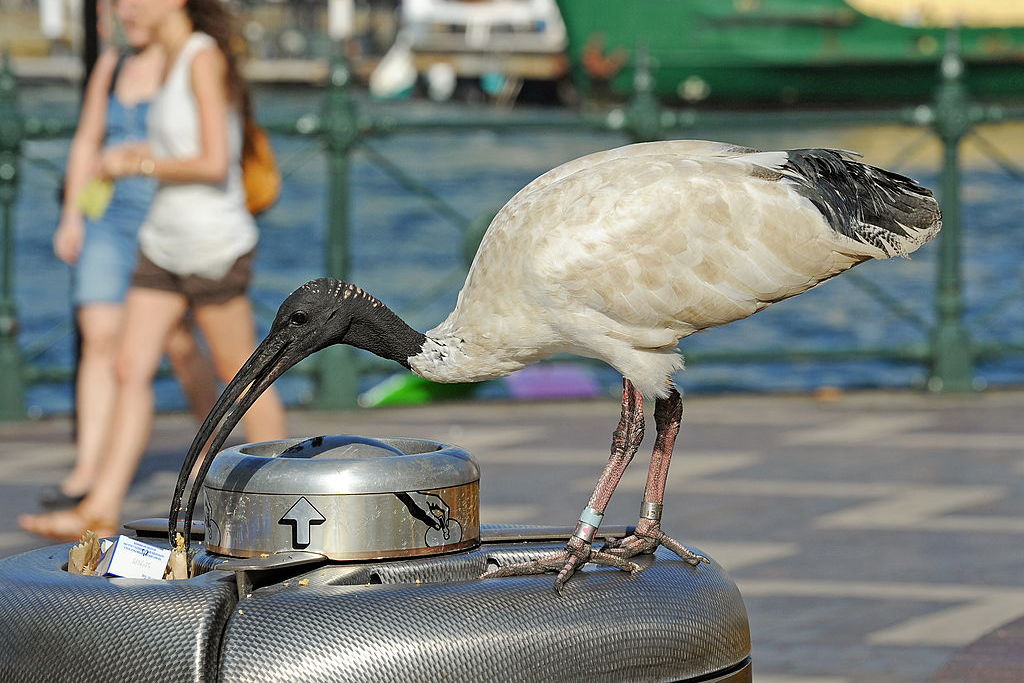The ‘Ibis Of Sydney’ Facebook Page Gives Powerfully Honest Insight Into The Lives And Stories Of Sydney’s Bin Chickens
Every ibis has a story that deserves to be heard.

Ibises. Ibii. Ibes. You’ve seen them. You’ve smelled them. You’ve thrown sharp, heavy things at them with brutal force. But have you ever really tried to understand them?
Students of Sydney uni have been documenting the movements of local ibises since 2014, and on October 12, Radio National published Ann Jones’ searing investigation. Jones, an evidently gifted linguist, referred to the animals throughout as “bin chickens”, “tip turkeys”, “dumpster divers”, “foul fowl”, and finally “winged rubbish rats”; she explained that their recent abundance in Sydney is caused by the degradation of their more natural habitat.
— Chris Gaul (@mrchrisgaul) November 13, 2015
“It’s the very things that disgust passers-by that enable ibis to survive against seemingly insurmountable odds in cities,” Jones wrote. “Those long, smelly wings enable them to fly hundreds of kilometres into new environments. The elongated legs and scales enable them to manoeuvre confidently among much larger humans. That beak … and that bald head also offer the ability to nimbly open up the box of cold chicken pieces and coleslaw. That creepily silky skin is an assurance against germs and disease when they stick their heads deep into humans’ rubbish bins.”
Beautiful words for a glorious creature. And now, finally, a local photographer and journalist has started hitting the streets to tell the untold stories of ibises, publishing them through the Ibis of Sydney Facebook page.
According to Alexander Majchrowski, the idea came quite naturally. “Me and my girlfriend were walking through Sydney when we stumbled upon a homeless ibis, a war veteran. She shared some touching, heartfelt stories. We ended up taking her out for a meal, but I think she was really just after the company. When we left, me and my girlfriend decided we should share some of these beautiful untold stories. So I ran back with my camera in hand, only to find she was gone.
“Her story touched me, and I wanted to use the experience as an inspiration to find and share more stories,” he says. “Every ibis has a story that deserves to be heard.”
Getting the ibises to talk isn’t as hard as you’d expect. “Some of them open up straight away!” Majchrowski tells me. “No problem. They’re just happy to have someone to talk to and tell their stories to. Some are a bit deterred by the fact they’ll be published, and we respect that; I have a huge collection of unpublished stories now. For the shy, a drink always helps — like with the ibis from Zug that we recently spoke to.”
I asked Majchrowksi what he’s learned about the ibis that most people don’t know.
“Behind every beautiful beak, there’s something even more beautiful: an ibis’s heart,” he says. “There are just so many personalities out there! There’s one ibis I’ve had a few encounters with, we call him Cheeky Pete — great ibis! I’ll be sure to share some of his stories soon.”
–
Follow Ibis of Sydney on Facebook.
–
Feature image by Greg Wood for Getty.